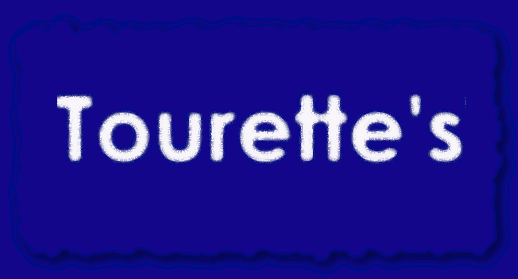Editor & Founder of Conditional Publications, Vrinda Pendred, discusses some of the more extreme treatments available for Tourette’s Syndrome.
So far in this series on Tourette’s Syndrome, we have discussed:
- What Tourette’s really is, from an insider perspective.
- The causes and triggers of Tourette’s.
- Prescription medication for Tourette’s.
- The use of anti-depressants in treating Tourette’s.
- Alternative treatments for Tourette’s.
If you missed any of these articles, please click one of the links above to read them.
Today, we will discuss some of the more extreme methods of treating Tourette’s Syndrome.
Nicotine
Recent studies, such as that conducted at the University of South Florida in 2001, have revealed that nicotine can help reduce symptoms of Tourette’s. In that blind study (conducted in such a way that no participant knew the terms of / could influence the experiment), 70 Tourette’s patients (aged 8-18) were divided into two groups. Both groups were given Haldol (a traditional prescription treatment for Tourette’s, discussed in a previous article). In addition, one group received a daily nicotine patch, while the other group received a daily patch containing no nicotine.
Those given the nicotine patches reported a dramatic reduction in their tics. When their dosage of Haldol was then halved, they still reported a reduction in symptoms over and above that experienced by the group who received no nicotine. The patches were then removed for a period of two weeks, and those who had received nicotine continued to experience greater control over their tics than those who had received none.
The researchers also reported that there was no indication that the children involved in the study had become dependent upon the nicotine – possibly because they were given such low doses. I personally feel this statement is perhaps a tad presumptuous. There is no way to say how such an experiment might affect the participants’ development until they are much older; and even then, it would be hard to pinpoint the cause behind any future symptoms.
Then again, the same can be said about giving anti-psychotics such as Haldol to developing children, as there is a lengthy list of damaging side effects related to this drug. It is possible that the effects of nicotine are less harmful, in the long run. That said, some of the participants reported unwanted side effects, including dizziness and nausea. The researchers therefore concluded that treating your child with nicotine patches is probably only beneficial in the most extreme circumstances.
However, researchers don’t really know why nicotine helps ease the tics. One theory is that the nicotine latches onto ‘nicotine receptors’ in the brain, inhibiting them from participating in the mechanics of Tourette’s syndrome within the nervous system. Another idea is that the nicotine acts as a nerve tranquiliser – a bit like Haldol, but more natural (made by a plant) than a chemical produced in a lab. I’ve never smoked, myself, but I’m aware that it’s very common for people to smoke when they’re stressed, agitated or nervous. They claim it calms them down.
In my experience, it is also very common for adults with Tourette’s to be smokers. They say it’s a form of ‘self-medication’ – although, the trade-off is potential lung cancer and emphysema, so it’s not something I’m about to take up.
Surgery
As mentioned in a previous article, one proposed theory behind the cause of Tourette’s is that an inherited gene is ‘woken up’ by streptococcal infection. With this in mind, one method of treatment is to have one’s tonsils surgically removed, or to undergo other similar procedures.
This is a highly controversial subject, due to the widely varying results. Some report a complete cure, while others experience temporary relief from their symptoms, only to be plagued with them again in time. Others still report no change following surgery.
I’m not a scientist, but I doubt anyone would lie about undergoing a complete reversal of symptoms. This suggests that (at least, for some), a tonsillectomy / adenoidectomy is a valid treatment for Tourette’s. However, this might not apply to everyone with Tourette’s. Maybe it comes down to the fact that, as I’ve said before, no one truly knows what causes Tourette’s. There could be multiple causes, which would explain why the cure for some may not affect others. I won’t pretend to know the answer. All I will say is that, as yet, there is no conclusion on this matter.
Deep Brain Stimulation (DBS)
And now we come to perhaps the most extreme measure for treating Tourette’s that currently exists: deep brain stimulation, often referred to as simply DBS.
Years ago, when DBS first hit the news, I watched a television programme documenting two people who underwent the procedure. One was a middle-aged man, married with children, so afflicted with coprolalia (inappropriate language tics) that he felt unable to go out into society. He spent all his time locked away in the family home, and felt his life had lost its purpose. The other was a child – I forget his age, but he was certainly no older than 13.
I watched in tearful horror as the man wrote out his will, just in case the procedure killed him or left him a vegetable for the rest of his life. I watched him say goodbye to his wife and children. Then he went into the operating room, where the doctors shaved his head and cut a hole in the top of his head, skull and all. It reminded me of the medieval practice of trepanning, in which doctors drilled multiple holes in the skull to let out the evil spirits. I suppose some might argue that having Tourette’s indeed feels like you’ve been possessed by spirits who wish you harm.
These modern doctors then inserted a long probe into the man’s brain. I should add that although the man received local anaesthetic, he remained conscious throughout this procedure, because the doctors had to ask him questions as they inserted the probe. Why? To make sure they weren’t hitting anything vital.
I watched this man flicker suddenly between emotional states, as the probe ventured deeper and deeper into his brain. One moment, he was euphoric; the next, he was in floods of tears. How controlled we are by these squidgy grey bundles of nerves and cells hidden within our heads! It makes you question how much of anything you feel is truly your own emotion.
Finally, this man fell into a deep state of calm. His tics stopped. His body stilled. All the expletives he had been shouting just moments before – they were gone. That was when the doctors knew they’d got it right. That was when they sealed up his head and then gave this brave (or possibly just insanely desperate) man full anaesthetic, so they could cut him open and insert a battery-operated device into his chest.
Once conscious, the man could switch on this device to send electrical stimulations up to the probe. If he so wished, he could also turn off the device and return to his former state. To demonstrate, he switched it off, and he immediately reverted to the shouting aggressive jerking creature we’d met at the start of the programme. Then he switched it on and, in an instant, he was quiet and serene. It was like something off Doctor Who.
I can’t tell you how much I cried throughout this programme. I cried in terror for this man, and I cried at the genuine cure he experienced at the conclusion. He stared into the camera and made a fluid, uninterrupted speech about finally being able to live again. It was miraculous. I couldn’t believe what science had achieved. I cried for the man’s family, of course. And I cried at the pain this man must have felt to have been willing to risk potential suicide for a chance at this cure.
They didn’t show the child’s operation, for obvious reasons. I’m not sure I could have watched such a thing. In the child’s case, the operation was far less successful. I cried at that, too – because the parents had been willing to risk their child’s life to find a cure that didn’t happen. And I can’t put myself in that child’s shoes and say how bad his tics were, but just watching them, as an outsider, they didn’t look nearly as bad as the middle-aged man’s. They reminded me of myself as a child, and I know that as an adult, I can function without resorting to brain surgery. What I’m saying is: I’m less convinced such a dangerous operation was necessary for that child.
Open any book on Tourette’s and you will read that in most cases, children eventually outgrow the worst of their tics. This didn’t happen for me, but I’ve spoken to people who experienced this. It is possible. But you can never reverse brain / chest surgery. Moreover, a child’s brain is still developing; it’s not done ‘cooking’, so to speak. That means whatever surgery you perform on the brain at such a tender age may not be relevant in a year’s time – and you have no idea what the brain will do to counteract the effects of the surgery, as it continues to grow. A child is also not old enough to make their own informed decisions about such things. I know we’d all like to think the parents are making the best choice for their child, but all the sad stories you hear about in the news are enough to tell you that’s not always the case.
Closing Thoughts
As ever, my aim is not to promote nor to condemn any particular form of treatment. It all comes down to the individual patient, their level of suffering, and their life experience. If you have any thoughts on this week’s subject, we would love to hear your comments in the box below.
Now that we’ve looked at some of the more extreme interventions out there, next time we will look at vitamin regimes and diets recommended for people with Tourette’s – something I have a bit more personal experience with. Be sure to subscribe to this blog so you don’t miss that article.
Finally, if you’d like to read a detailed depiction of what Tourette’s is really like to live with, please read my short story The Passenger, available on Amazon Kindle and the Kindle phone/tablet app. US Readers UK Readers
Until next time….
Vrinda Pendred is a graduate of English with Creative Writing at Brunel University. She completed work experience with Random House and proofread for Mandala Publishing. She is married with two children and lives in Hertfordshire, England, where she does freelance editing and proofreading. She is also a writer, and you can learn more about her personal work here.
Vrinda has five neurological conditions: Tourette’s Syndrome, Obsessive-Compulsive Disorder, ADHD, High-Functioning Autism and bipolar disorder. In 2010, she founded Conditional Publications with the intention of providing a creative outlet for people, and (hopefully) changing a few minds out there about what neurological disorders really are – including not just the limitations, pain or frustration, but also the more positive, beneficial ‘symptoms’ of these strange conditions.
She made three contributions to Conditional Publications’ debut release Check Mates: A Collection of Fiction, Poetry and Artwork about Obsessive-Compulsive Disorder, by People with OCD. Since then, she has released a novel entitled The Ladder, inspired by her personal struggle with bipolar disorder, as well as a number of short stories, and a YA sci-fi /fantasy series called The Wisdom, all available for purchase from Amazon.










